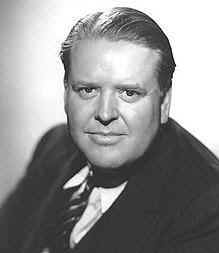
PLATO ZORBA
Real Name: Plato Zorba
Occupation: Parapsychologist/Psychologist, Paranormal Researcher
Known Relatives: Cyrus (nephew), Hilda (niece-in-law), Medea (grand-niece), William (“Buck,” grand-nephew), Jean (grand niece-in-law, deceased), Robert (“Bobby,” great-grandnephew), Kathy (great-grandniece), Cyrus Kriticos (possible son), Arthur Kriticos (possible grandson), Kathleen ("Kathy," possible great-granddaughter), Robert ("Bobby," possible great-grandson),
Base of Operations: Los Angeles, California
First Appearance: Thirteen Ghosts (1960/2001)
History:
Plato Zorba was a prominent psychologist in the early 1930s, but part way
through his career, he became interested in researching paranormal activity. He spent much
of his later life researching and collecting tales of the supernatural, even
creating many of the modern theories about ghosts, including their connections
to electromagnetic energy. His interest in the paranormal, however, shifted him
into investigating true accounts of the paranormal, and he became one of the
first known experts in parapsychology. In the heyday of Hollywood, even
traveling to California from the East Coast to serve as a paranormal consultant
for horror movies. Many of his colleagues and fellow scientists soon began to
cast doubts on his professionalism as Zorba began incorporating and mixing
legendary occult mysticism and supernatural belief with traditional
parapsychological methods. Using his theories, Zorba created a sophisticated pair of glasses that
reportedly helped him to see ghosts and even tampered with movie making sound
equipment to record sounds inaudible to the human ear. He also made several
attempts to contact the heirs of Thomas Edison as well as the ghost of Edison
himself in order to get the plans to a machine to contact the spirit world,
which the great inventor was supposedly working on before his death. With
psychic Elaine Zacharides and his lawyer and assistant Benjamen Rush, Zorba traveled the
world visiting haunted houses as far away as Europe and the Far East. One
location that always fascinated him was
Vannacutt Sanitarium
near Los Angeles where Dr. Richard Vannacutt experimented on his
patients and later burned to death in an incredible fire in 1931.
In the later years of
his life, Zorba became a recluse in his
home in the Hollywood Hills and acted more and more eccentric
and sometimes paranoid. He confessed to his lawyer Benjamin Rush that he had
stumbled into secrets that he was not supposed to know. Irrationally believing the ghosts he
had spent years chasing were haunting him, he confined himself up in his home.
Whether it was his own doing is a matter of debate, but Zorba had brought to his
California home as a souvenir a relic, possession, keepsake or detached body part that had
supposedly belonged to every spirit he had explored, essentially trapping these
eleven ghosts in his home. His own beliefs were that
the spirits he had investigated could be tied to these objects. He allowed visits from
virtually no one, but filmmaker William Castle sometimes came to him to get
inspiration and ideas for the horror movies he was creating. Just before his
death, Zorba eventually became completely paranoid and didn’t trust anyone anymore. He
began to suspect he would become a spirit himself in his own house (a 12th
ghost) and converted all his accounts into cash and concealed the money throughout hidden
and inconspicuous spaces through the structure. In November 1960, he passed away
peacefully in his sleep of what was believed to be a heart attack, but a year
later, speculatory evidence proved he might have been murdered and suffocated by
Ben Rush trying to obtain his fortune.
Zorba’s
closest living relative, Cyrus Zorba, inherited the house after his death and
confirmed the existence of the ghosts haunting the old edifice afterward. In a séance,
his spirit predicted a 13th ghost would free all the ghosts he had trapped
there. However, several years later, a young man named Cyrus Kriticos soon confronted
the Zorbas claiming to be Plato Zorba's illegitimate son and the true heir to
Zorba's paranormal research. Using the volume of data, Kriticos allied himself
with several paranormal experts and psychics, such as Kalina Oretzia and Dennis
Rafkin, managed to perfect Zorba's glasses to see ghosts and expanded on his
work to capture and trap earthbound spirits in a house in upstate New York.
Case Files: Whipstaff
(03/18/38), Vannacutt Sanitarium (1/13/43),
Kane Manor (3/22/45),
Edbrook
(10/13/45), Wiltsett
Castle (10/30/58), et al
Powers/Abilities: Plato Zorba was an accomplished psychologist and
parapsychologist with a vast knowledge of paranormal research and folklore. He
was also inventive and intuitive, developing "ecto-glasses" which
allowed him to see ghosts in their spirit state through the ultra-violet range
of light. The glasses were later
perfected by Cyrus Kriticos to see ghosts in a nearly physical state. Zorba also
had a nearly photographic recall for everything he had read; he was able recall
points from every reputed haunted house he had read or encountered. His
reasoning skills were above par that much of his hunches and conclusions were
almost always correct.
Comments: Plato Zorba is a fictional character from the 1960 movie
"13 Ghosts," created by horror maestro William Castle. He was almost
solely represented by a portrait in the Zorba House parlor whose identity is not
known (possibly Castle himself). An unidentified extra played the character as a ghost. F. Murray Abraham portrayed
his counterpart Cyrus Kriticos in the 2001 movie, "13 Ghosts," often
stylized as "Thir13en Ghosts." The portrait on this bio is actor
Robert "Bud" Jamison, best known as a recurring comic foil in
the early 1940s "Three Stooges" shorts.